How to choose a geotextile for drainage
Geofabrics or geotextiles have recently been increasingly used in various works. This material is used, for example, when creating a drainage system. It protects drains from soil penetration and thereby improves the throughput of the entire system. How to choose it? What properties should it have? This will be discussed in this article.
Varieties of geofabric and its characteristics

To answer the question of what kind of geotextiles need for drainage in the country or in a private house, you need to get acquainted with its varieties. Modern industry produces a material that differs in the type of raw materials used and the technologies used:
- Geofabric made from polyester or polypropylene. Such material is highly durable.
- Material made from monofilament. Such products are most often used when creating a drainage system. Such material also has high strength.
- Textiles made from blended threads. It is made from waste textile production. For this reason, it may come across cotton or wool yarns that are prone to rotting. This fact must be considered when buying a geofabric.
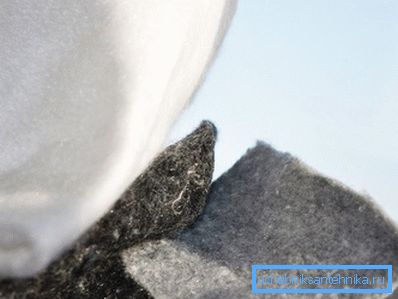
Any geotextile canvas has certain characteristics. Among them:
- Density. This parameter is the main property of the material. The density is determined based on the weight of 1 m2 material. The higher the number, the stronger the fabric. But with increasing density, the moisture filtration coefficient decreases, which negatively affects the efficiency of the drainage system. Therefore, for drainage it is necessary to use a geofabric with a density of 100 to 150 g / m.2.
- Water filtration coefficient. This value indicates how much liquid can filter the material during the day. The value of the coefficient is directly related to the density of the material - the smaller it is, the more water can pass through the material. So, for a fabric with a density of 100 g / m2 the size of the water column, which is able to skip the material, is 140 m per day. But for a fabric with a density of 500 g / m2 this value is 80 m.
- Mechanical strength. Determines the amount of stress that the material is able to withstand.
When choosing geotextiles pay attention to the width of the canvas. From this will depend on the size of the coating. As a rule, it is produced in rolls with a web width from 2 to 5 m.
Selection features
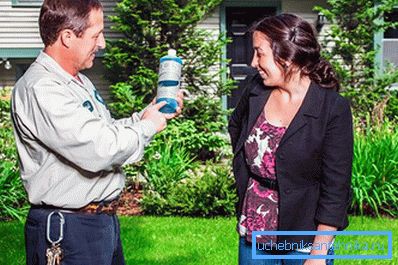
If you decide to create on your site a highly efficient drainage system, then you need to choose the right geotextile canvas. For this it is better to use some of the recommendations of experts. The first thing you should pay attention to is the density of the material.
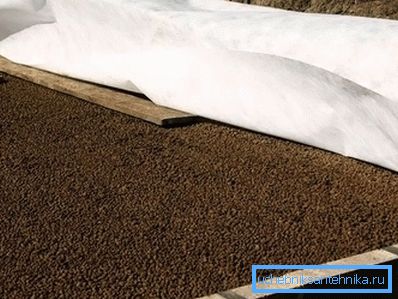
Experts recommend choosing a fabric with a density of 150 g / m2. Such material has sufficient strength and at the same time is able to pass a large amount of water.
You should also pay attention to the raw materials used in its manufacture. In this regard, monofilaments have proven themselves well. They are not subject to rotting and have a long service life. Cheap analogue of mixed materials for the drainage system is not suitable. Such a material quickly loses its properties.
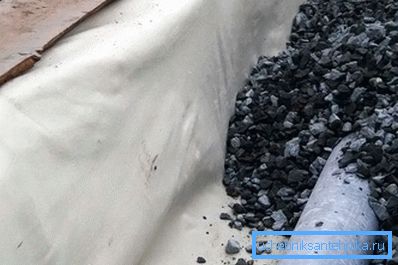
According to experts, for the drainage system it is better to choose a geofabric capable of passing a column of water at 140-125 m per day.
It is necessary to choose a material with high strength. This material will be in the ground, which means that it must be resistant to stress. Thus, the canvas must withstand the breakdown with a force of 400–500 N. At the same time, it must cope with both longitudinal (1.9–3 kN / m) and transverse (1.5–2.4 kN / m) loads.
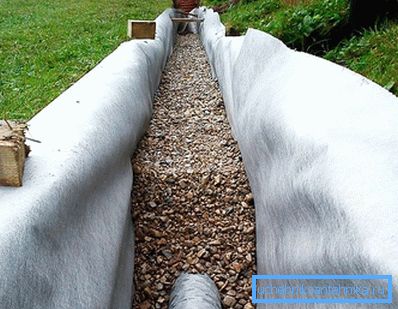
The dimensions of the canvas are selected based on the cross section of the filter layer. It should be remembered that the geofabric should cover a cushion of gravel from all sides, while the closure should be “overlapped” from above. Otherwise, sufficient filtering will not be provided, and the ground may clog the perforated drainage pipes.
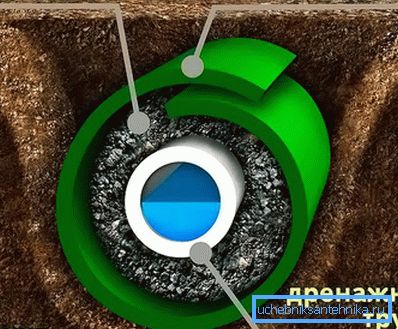
If we talk about the cost, it mainly depends on the density of the material and the raw materials used. But it is better to spend money and purchase high-quality geofibers than subsequently redo the entire drainage system.
Video
This video shows how to properly drain the area using geotextiles: